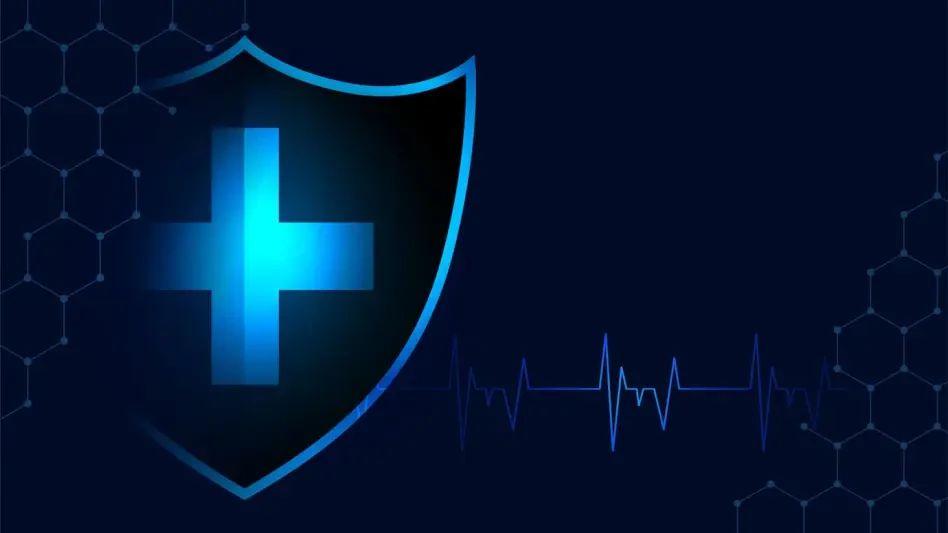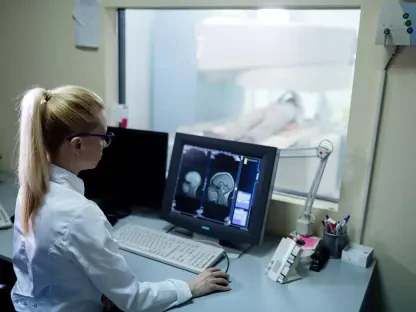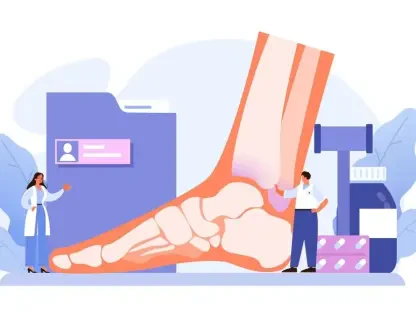The healthcare sector has witnessed a perilous escalation in data breaches, predominantly driven by hacking incidents, particularly ransomware. Research reveals a staggering 88% of patient records compromised from 2010 to now were due to hacking and IT incidents. A significant portion of these breaches can be attributed specifically to ransomware, which, at its peak, accounted for nearly 40% of exposed records. This trend underscores the ever-increasing influence of ransomware as a formidable threat to healthcare cybersecurity. The sector’s vulnerability to these cyber intrusions continues to rise, emphasizing the urgent need for innovative security strategies.
The Rising Tide of Ransomware
Escalation and Impact from 2010 to Present
The emergence and subsequent growth of ransomware as a primary cyber threat have dramatically reshaped the landscape of healthcare security. In recent years, ransomware attacks have soared, with a notable increase from no incidents in 2010 to comprising over 30% of healthcare-related breaches in 2021. While there was a slight decline last year, incidents still significantly impact numerous patient records annually. Cybercriminals target healthcare organizations, often paralyzing systems until a ransom is paid, compromising sensitive patient data in the process. Such attacks have had a profound impact, breaching more than half of all patient records each year since 2020, highlighting the grave reality these organizations face.
The Diverse Nature of Breaches
The analysis of breaches affecting 500 or more individuals, as reported to the Office for Civil Rights, reveals a complex spectrum of security threats. These breaches are categorized into five major types: hacking or IT incidents, theft, unauthorized access or disclosure, improper disposal or loss, and cases with unidentified causes. Notably, hacking incidents have risen substantially in recent years, dwarfing the occurrences of theft and unauthorized access, which have been on a decline. The diverse nature of these breaches reflects the constantly evolving challenges healthcare providers face, each type presenting unique threats and requiring specialized security measures.
The Impact on Patient Care and Data
Consequences of Cyberattacks
Ransomware attacks extend beyond financial theft; they disrupt patient care and compromise data integrity. The halted access to medical records can result in delays in patient treatment and increase the risk of errors. This disruption places healthcare providers in a precarious position where quick decisions regarding ransom payments often loom, balancing financial loss against immediate operational needs. The strain these cyberattacks place on healthcare resources further exacerbates the situation, leaving providers scrambling to maintain patient care standards while addressing the breaches’ repercussions. The sophisticated nature of these attacks further complicates recovery efforts, as providers must navigate intricate technical landscapes to restore systems.
Evaluating Incidents and Ransomware Linkage
Researchers have delved into incident reports to better understand the linkages between breaches and ransomware attacks. They have scrutinized details like ransom demands, cryptocurrency payments, and associations with known ransomware groups. Insights from these analyses reveal that healthcare providers, particularly hospitals and health plans, are exceptionally vulnerable to ransomware due to the devastating consequences a cyberattack can have on patient care. The implications are clear: the necessity for bolstered cybersecurity protocols is paramount. Adopting preventive measures, such as enhancing surveillance clarity in reporting and monitoring potential ransom payouts, forms a cornerstone of resilience-building efforts against ransomware threats.
Evolving Defense Mechanisms
Challenges and Strategic Measures
The escalating ransomware threat has prompted the healthcare sector to reevaluate and revamp its defense mechanisms. Although the challenges are significant, opportunities exist for enhancing cybersecurity protocols. One potential solution involves implementing mandatory ransomware-specific fields in breach reporting to provide clearer incident overviews. Furthermore, revising severity classifications of data breaches can help better reflect operational impacts on healthcare entities, thereby assisting in prioritizing response efforts efficiently. Monitoring cryptocurrency transactions also emerges as a crucial strategy, with the potential to disrupt ransom payments, providing a deterrent against future ransom demands and making the healthcare sector less attractive to cybercriminals.
Engaging Collaborative Efforts
Given the complexity of the cybersecurity landscape, collaborative efforts between healthcare providers and regulatory bodies have become indispensable. Such partnerships can lead to more robust defenses, improved detection capabilities, and faster response strategies. Regulatory bodies can offer guidance and resources, facilitating a cohesive approach to cybersecurity that transcends individual organizational capabilities. The emphasis is on fostering an environment where information sharing and cooperative strategies bolster the sector’s resilience against cyber threats. By working together, stakeholders can develop comprehensive frameworks that address the evolving nature of cybersecurity threats, ultimately safeguarding patient data and ensuring continuity in patient care services.
Future Directions in Healthcare Cybersecurity
Continuous Research and Innovation
Healthcare cybersecurity remains a dynamic field, necessitating ongoing research and innovation to address emerging challenges. Continuous advancements in technology and techniques used by cybercriminals demand that healthcare organizations remain vigilant and proactive. Research should focus on developing adaptive security frameworks that encompass the latest technological innovations and anticipate potential threats. By staying ahead of cybercriminal tactics, healthcare entities can protect sensitive data and minimize disruptions to medical services. Embracing innovative security solutions, such as artificial intelligence and machine learning, can enhance threat detection capabilities, enabling healthcare providers to swiftly identify and neutralize potential breaches.
Crafting Comprehensive Policies
The development of comprehensive cybersecurity policies is critical in ensuring a resilient defense against cyber threats. These policies should align with the specific needs of healthcare organizations, addressing the multifaceted nature of cyber risks while promoting a culture of security awareness among healthcare professionals. By focusing on prevention, preparedness, and response, organizations can create a robust cybersecurity posture that deters cybercriminal activities. Training and education programs are essential components, equipping staff with the knowledge and skills needed to identify and respond to potential breaches effectively. Comprehensive policies serve as a foundation for healthcare providers to navigate the complex landscape of cybersecurity and safeguard patient data.
Strengthening Healthcare Cybersecurity for the Future
The healthcare sector is increasingly plagued by data breaches, with hacking, especially ransomware, emerging as the primary culprit. Recent studies indicate that an overwhelming 88% of patient records compromised since 2010 have fallen victim to hacking and IT incidents. Ransomware, in particular, has played a dominant role, at one point being responsible for nearly 40% of all exposed records. This highlights ransomware’s growing menace as a substantial threat to healthcare cybersecurity. The industry’s susceptibility to these cyber assaults is rising, drawing attention to the critical need for advanced security measures. Hospitals and healthcare institutions, with their vast amounts of sensitive data, have become prime targets for cybercriminals seeking to exploit vulnerabilities for financial gain or to cause disruption. Therefore, it’s imperative for these organizations to adopt cutting-edge technologies and comprehensive policies to safeguard against such threats, ensuring patient privacy and maintaining trust in the healthcare system.









